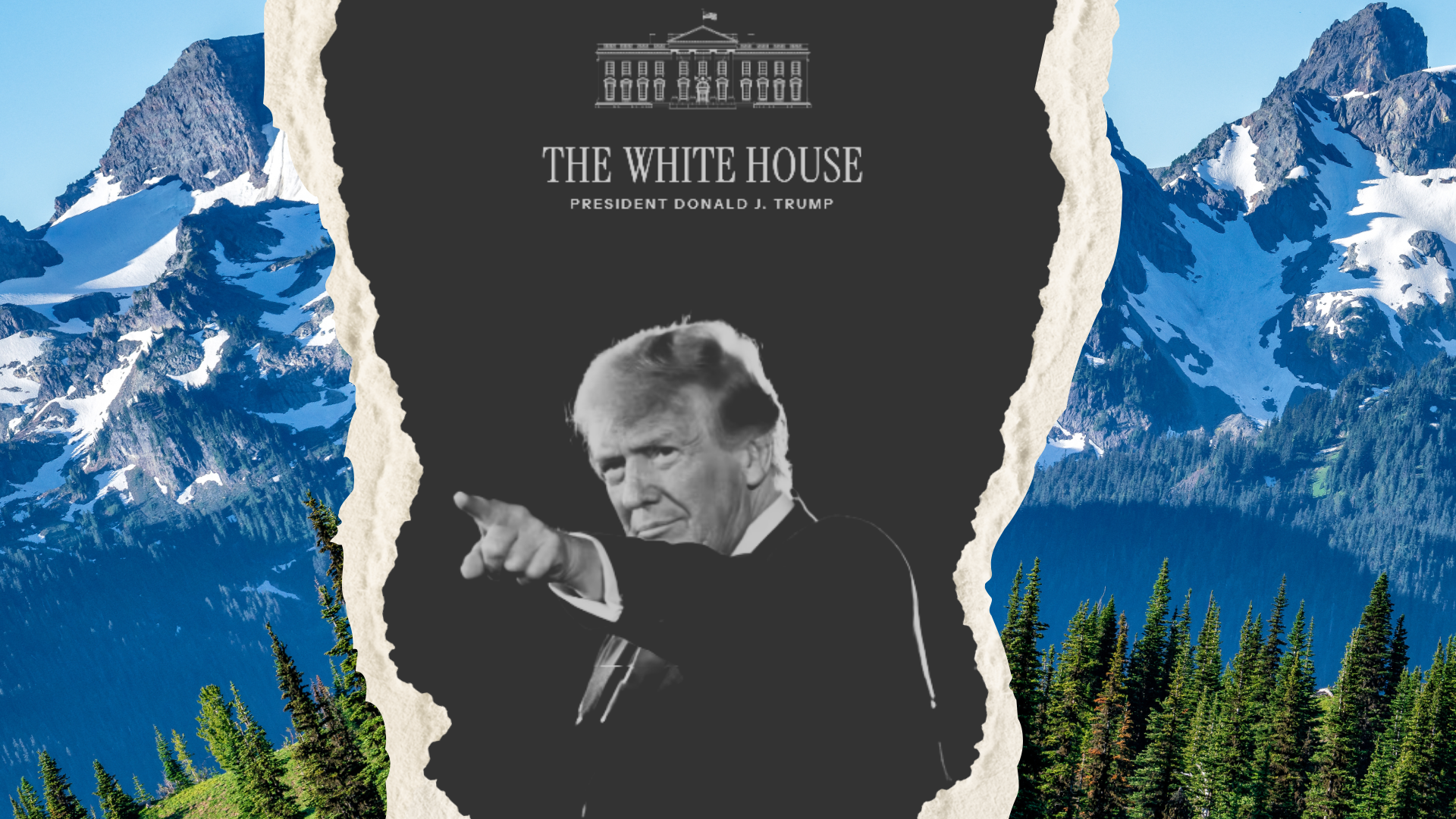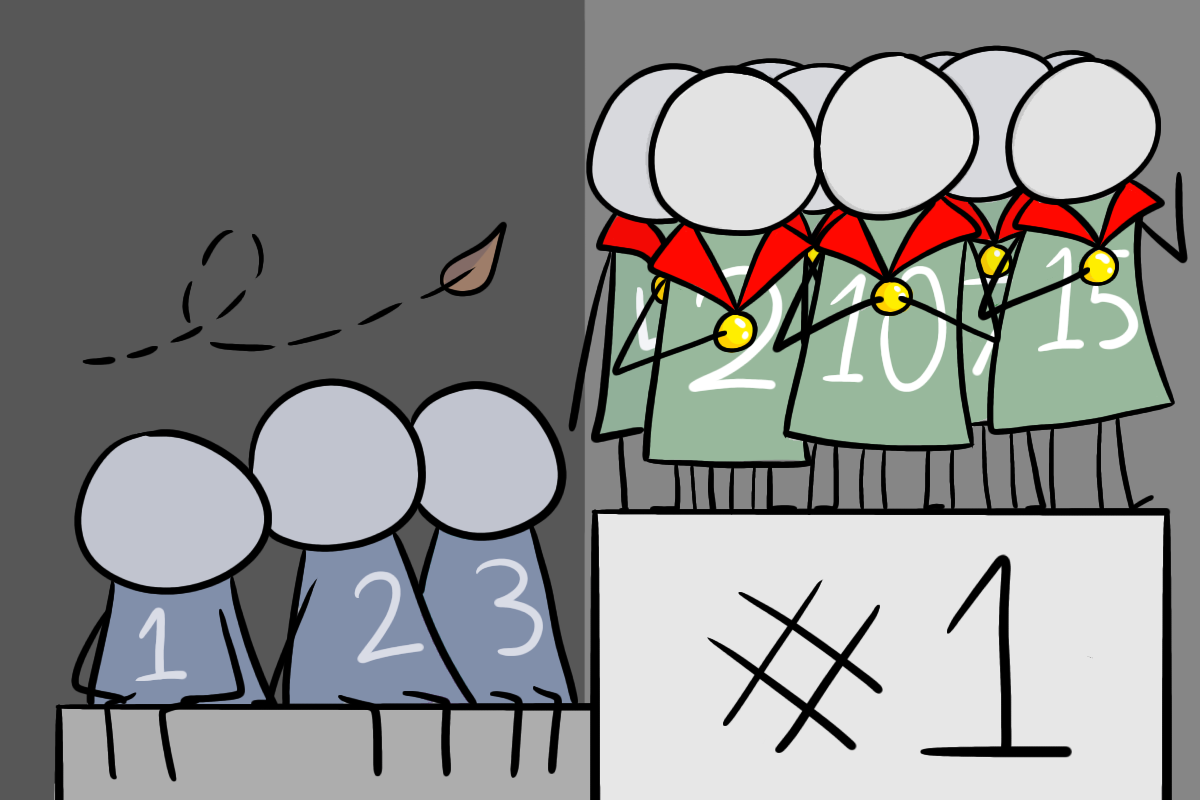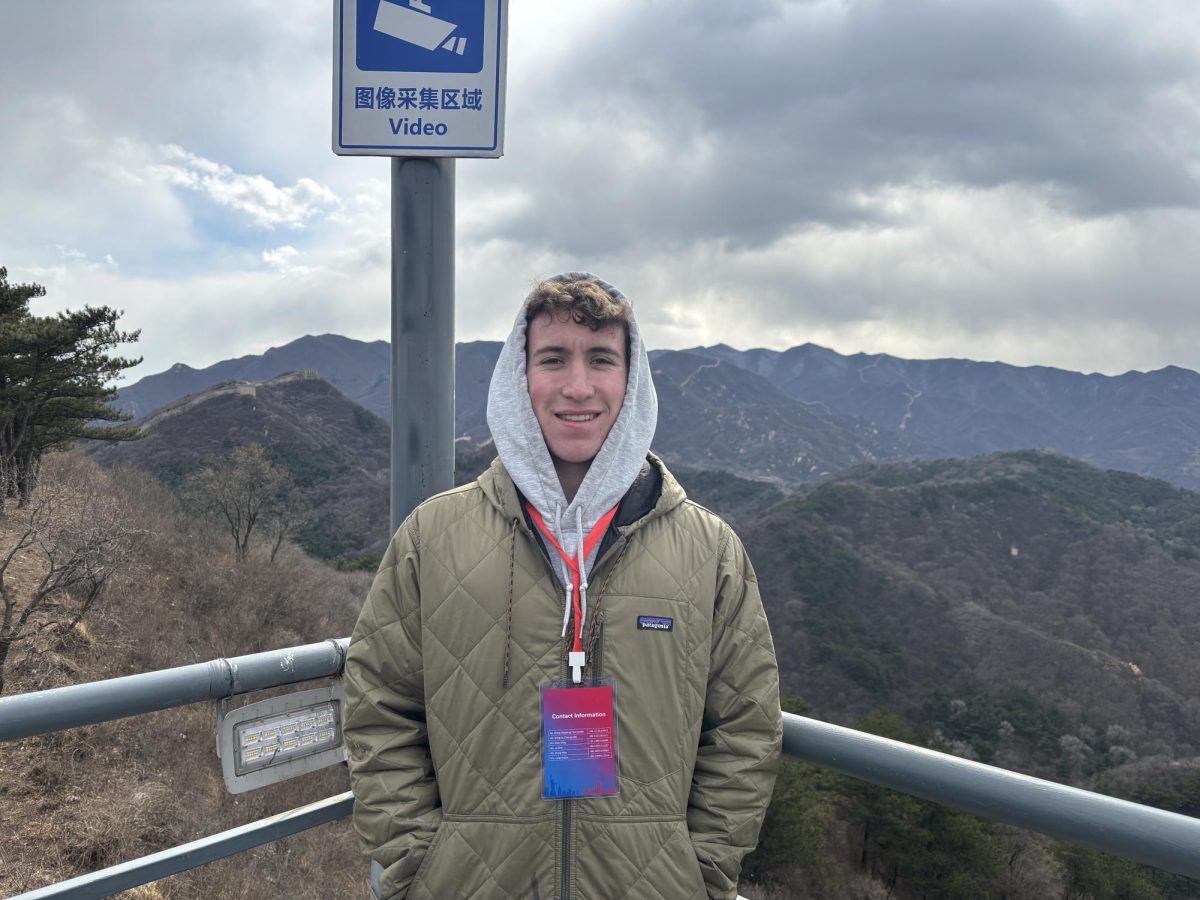
Public lands in peril
I’ve had a longtime dream of visiting every single United States national park, and as a kid, the time I spent outdoors was incredibly meaningful to me. Over the years, I’ve gotten to experience the beauty of a few of them—Grand Teton, Yellowstone and Denali. However, I’m starting to lose hope that I’ll get the opportunity to visit the rest because of the devastating effects of actions taken by the Trump Administration that have cut staffing to national parks and national forests around the US and exposed them to increased logging.
One of the major executive orders created by the Trump Administration that is currently threatening the safety of the National Forest Service, or NFS, land is called “Immediate Expansion of American Timber Production.” Released on March 1, the main goal of the executive order, or EO, is to remove red tape and make it easier for timber production to increase by 25%. The order cites “heavy-handed Federal policies” as the reason why America cannot fully utilize its lumber resources.
National forests are different from national parks, as activities that are prohibited in many national parks, such as hunting, logging, mining and grazing, are permitted in national forests. However, while these activities are allowed, it does not reduce the land as something to be exploited for resources, as national forests also exist for recreational and protective purposes.
The order additionally says that not utilizing timber supplies on US land has “impeded the creation of jobs and prosperity, contributed to wildfire disasters, degraded fish and wildlife habitats, increased the cost of construction and energy and threatened our economic security.”
Section three of the EO is labeled “Streamlined Permitting” and says, “All relevant agencies shall eliminate, to the maximum extent permissible by law, all undue delays within their respective permitting processes related to timber production.” By streamlining permitting regarding timber, the EO endangers our national forests by making it far easier to overrun protective measures designed to preserve NFS land.
“Immediate Expansion of American Timber Production” is aided by an April 3 memo from the Secretary of the Agriculture Department, Secretary’s Memorandum 1078-006, which directly names the EO in its purpose. The memo designated an “Emergency Situation Determination,” or EDS, on around 59% of National Forest land. The EDS allows the Forest Service to take emergency actions to “achieve relief from threats to public health and safety, critical infrastructure, and/or mitigation of threats to natural resources on NFS lands.”
The memo designating the EDS argues that the EDS and the emergency actions taken by the Forest Service “will improve the durability, resilience, and resistance to fire, insects, and disease within national forests and grasslands across the National Forest System.” However, multiple environmental groups are labeling the memo as a cover to make it easier and quicker to increase timber production up to the 25% set by the EO. The Sierra Club, a noted grassroots environmental organization founded by John Muir, a famous naturalist, conservationist and writer, was one such organization.
A statement released by their Associate Director of Legislative and Administrative Advocacy for Forests and Public Lands, Anna Medema, argued that if the Trump Administration truly cared about wildfire issues, they wouldn’t cut wildfire prevention staff and departmental budgets. It continues by saying,
“What Donald Trump and his cabinet are actually interested in is using any power at their disposal to hand over control of the public lands and national forests that belong to all of us to billionaires and logging companies. The American people should not tolerate this sleight of hand from the people who have a duty to protect these landscapes for the next generation,” the statement said.
The Wilderness Society, a non-profit organization dedicated to land conservation, similarly commented on actions taken by the Trump Administration.
In a statement by Josh Hicks, their Conservation Campaigns Director, the organization said, “Don’t be fooled: the Trump Administration and its allies in Congress aren’t trying to solve the wildfire crisis or protect communities threatened by it. Instead, they are aiming to deepen the pockets of private industry to log across our shared, public forests, while sidestepping public review.”
These organizations are raising the alarm about these deliberate measures being put into place to make it far easier to destroy our national forests and protected lands. Additionally, these are not the only things the Trump Administration is doing that are causing harm to our protected lands.
On Feb. 14, DOGE, or the Department of Governmental Efficiency, headed by Elon Musk, implemented large layoffs of government employees, focused mainly on probationary employees. These employees are generally those who have been recently promoted or hired, as they have fewer protections. The National Park Service and National Forest Service were drastically affected by this, with around 1,000 national park employees and around 3,400 national forest employees being laid off. These losses affected not only the operating hours of parks but also the safety of the environment and guests. Many of the employees who were laid off were red-card-carrying employees, which means that they were trained in how to aid firefighting crews as well as participate in controlled burns of land. The loss of these workers means that there are far fewer people working in our parks who are trained to handle dangerous fire situations. These layoffs also drastically affected the livelihoods and dreams of many workers while making it increasingly difficult for parks to remain open for all of their previous hours.
However, they may be forced to under an April 3 order from U.S. Secretary of the Interior Doug Burgum, Secretarial Order 3426 “Ensuring National Parks Are Open and Accessible.” The order requires National Parks to keep their current operating hours, despite their recent staffing cuts. This order ultimately creates unsafe conditions at our parks, as they are forced to remain open at unsustainable hours. This causes a decline in the upkeep and safety of the parks.
The National Parks Conservation Association, a group founded to advocate for national parks, released a statement condemning the order. Written by the SVP of Government Affairs for the organization, Kristen Brengel, it calls the secretarial order “micromanagement at its worst,” and “reckless and out of touch.” The statement continues by saying,
“Park managers know their parks better than anyone. They have been trusted to make short- and long-term decisions to protect visitors and safeguard our most irreplaceable natural and historic treasures. The [Trump] administration is now tying their hands and forcing them to jump through bureaucratic hoops just to close a trail, campground or visitor center they believe poses a risk or can’t be staffed.”
While no one can singly-handedly change the current dangers facing US protected lands, taking actions together can make changes on smaller scales that can still help our national parks and national forests. Visiting less-frequented national parks can help to show that people care about these places, and raising awareness can educate others on the dangers our protected lands face. Donations can also be made to national parks and forests, and park friends’ groups. Finally, if you are able, vote. Help to put people in office who believe in the safety and importance of these lands.
It is disturbing to think about how just a couple of hundred years ago, the towns and cities that we all live in were once filled to the brim with untampered wildlife and beautiful landscapes of trees and lush scenery. Nowadays, the only places you can find these once common, but now sparse, gems are in the protection of the National Park services around the United States.
These parks demonstrate the heritage of our world through diverse landscapes like the jagged mountains of the Grand Tetons, the Great Lakes that seem as big as oceans and the Grand Canyon that could hold a ocean and combinations of all of the above, like you see in Crater Lake tucked away in the Oregan mountain crest. A life without their wonders would be unimaginable, but living without these national parks may be our reality sooner rather than later.
The campaign to protect the precious land in the United States quite frankly, has been slow and has seen up and down commitment throughout the last hundred years. The blame for the lapse of action or reversal of past action falls largely on the shoulders of the president of the United States. Currently, President Donald Trump is serving his second term in office after winning the presidential race against former President Joe Biden and other candidates.
President Trump is no stranger to rolling back environmental policies in order to save or make money, as we saw in his first term with international actions like pulling out of the Paris Agreement. Trump’s first words at his inauguration speech let the public know he would continue his nearly irreversible path of environmental carnage.
“We will drill, baby drill.” President Donald Trump said in his second inauguration speech on Jan. 20.
On President Trump’s first day in office, he declared a nationwide energy emergency to help increase the reasoning behind actions such as rolling back major funding to National Parks and cutting jobs in the process. These job cuts come at a crucial time in the United States as climate change begins to hit harder than ever, with the hottest day on record in 2024 and some of the hottest months ever recorded within the last decade. Without these jobs, our beautiful national parks have little to protect themselves against disasters like fires, invasive animals and general security of the land.
As of 2025, there are around 20,000 National Park employees covering 85 million acres of protected land in the United States. This means that there are 0.23 employees per acre of land, or one single employee for every 1050 acres of land. To put that into perspective, on average, each farmer in the United States owns and maintains 466 acres of land spread across a family size of 3.15 people. This means that on an average farm, there is one person to cover about every 148 acres of land. Every national park employee has to cover seven times more area.
Imagine sitting on top of the hill in a fire lookout all alone, being the only person standing between a potentially forest-leveling fire. It sounds lonely and stressful, doesn’t it? Well, that’s the situation employees are faced with currently.
“How do they do their day-to-day operations when they don’t have the staff?” Aviva O’Neil, executive director of the Great Basin National Park, said.
Climate change is one of the, if not the greatest, threats to humanity and the world we live in. The consequences of defunding protected land and the extensive increase of fossil fuel production from President Trump’s executive orders will only serve to increase climate change. More fires mean more carbon dioxide being released from trees, fewer trees mean there is less natural absorption of the carbon dioxide, and the collapse of ecosystems and less wildlife. The animals we ooh and aah at today may not exist for our kids to see.
Nothing is hopeless, though. Donating in person or online through the National Park website, volunteering and simply just being respectful of nature and not littering. Your effort doesn’t need to be huge; even the smallest of gestures are greatly appreciated. The national parks’ well-being is in your hands, don’t let them slip away for momentary gain.
-
 OpinionThe icons of Formula 1
OpinionThe icons of Formula 1 -
 OpinionAre reels real?
OpinionAre reels real? -
 OpinionClass divided
OpinionClass divided -
 OpinionBrain nourishment
OpinionBrain nourishment -
 OpinionC (these) dramas
OpinionC (these) dramas -
 OpinionEditorial: Food for thought
OpinionEditorial: Food for thought -
 OpinionRenaissance to ruin
OpinionRenaissance to ruin -
 OpinionMy nine days in China
OpinionMy nine days in China -
 OpinionGenerating student preparedness
OpinionGenerating student preparedness -
 OpinionThe death of the hobby
OpinionThe death of the hobby


Your donation will support the student journalists of West High School. Your contribution will allow us to purchase Scholarship Yearbooks, newsroom equipment and cover our annual website hosting costs.


